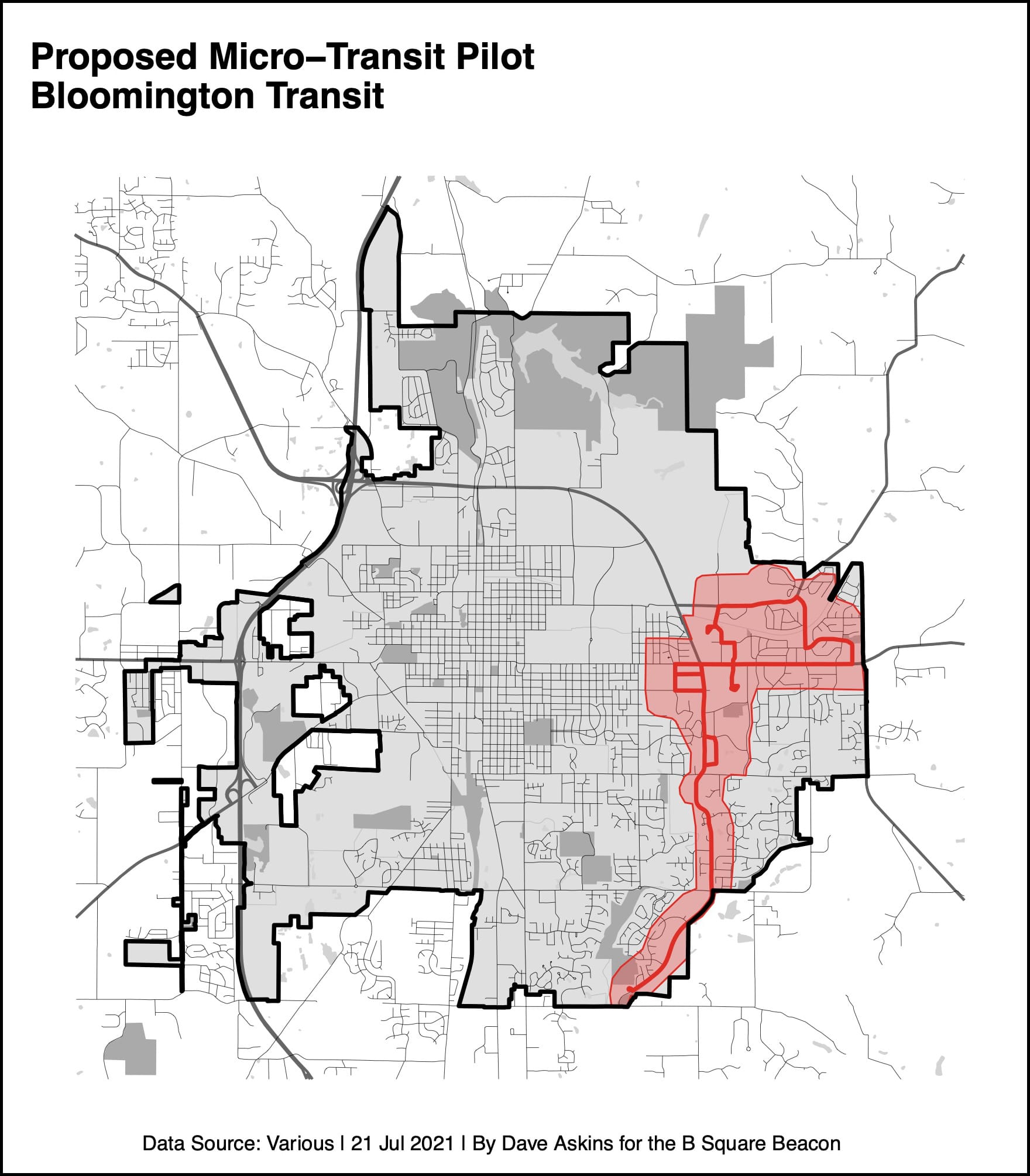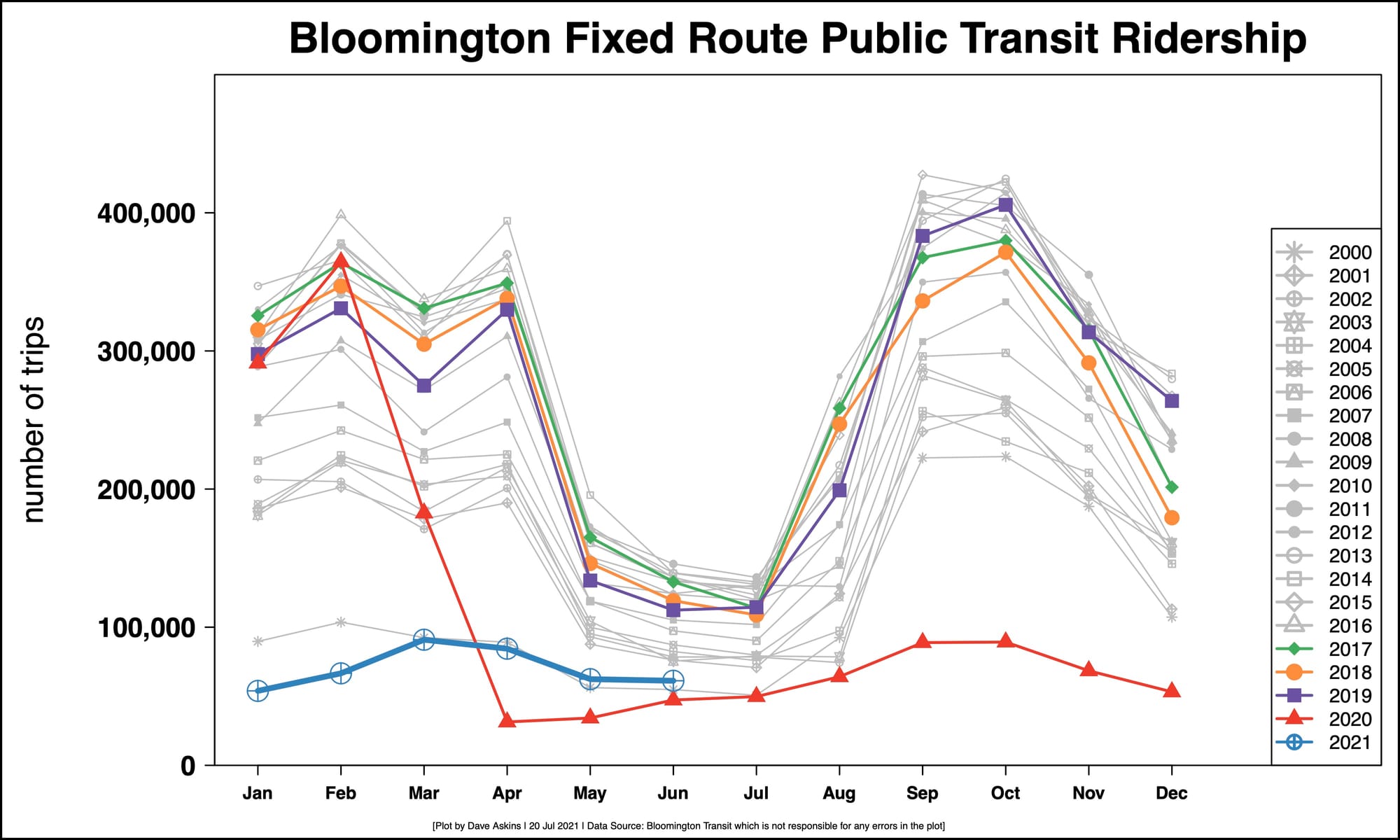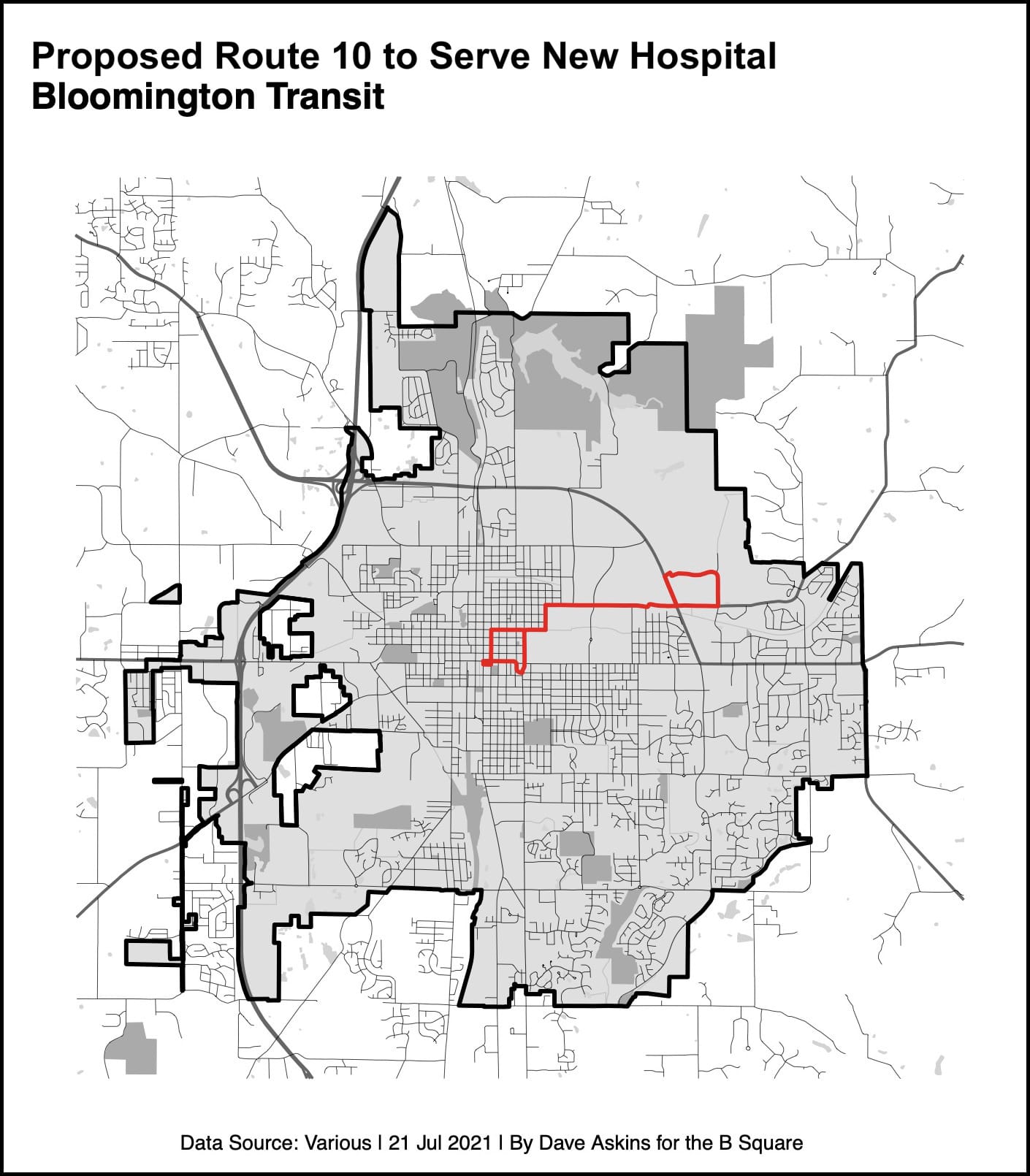Bloomington bus news: Temporary Route 10 for new hospital; possible pilot could trade Route 8 for Uber/Lyft-type service




Starting this fall, people who need to make a trip within a quarter mile of Bloomington Transit’s Route 8 bus line might be able to manage that with an app like Uber or Lyft, but pay only a regular $1 public bus fare.
The regular fixed-route service on Route 8, which runs north-south along the College Mall corridor on the east side of town, would not be available during the pilot.
A BT board decision on that pilot program will come at the board’s August meeting, after a public hearing at the downtown transit center, at 3rd and Walnut streets.
The public hearing on replacement of Route 8 with Uber/Lyft-type service is set for July 27 at 6:30 p.m.
At its Tuesday meeting, the five-member Bloomington Transit board gave the go-ahead to BT staff to solicit interest and quotes from service providers like Uber and Lyft on providing the on-demand service.
If the on-demand service is implemented—which is called “micro-transit” in the public transportation business—it would start in September or October and run for a year.
While a decision on a micro-transit pilot is still not final, the BT board did give the staff a green light to move ahead on implementing a new temporary Route 10. The new route would provide regular bus service to the new hospital location for IU Health on the SR 46 bypass.
Route 10 would run from the downtown transit center up to 10th Street and along 10th Street to the SR 46 bypass. Service on Route 10 would start in November, which coincides with the opening of IU Health’s new hospital.
The new Route 10 will be temporary in the sense that it will last only until a systemwide new package of routes from an optimization study can be implemented. The implementation of the optimized routes was planned for rollout in fall 2020, but was delayed due to the COVID-19 pandemic.
The rollout of optimized routes is now slated for sometime in early 2022. Route 10 would be subsumed by Route 90, which would take the place of the current routes 3 (College Mall) and Route 9 (IU Campus).
The microtransit proposal got a fair amount of discussion from the board at its Tuesday meeting. The board seems supportive of the concept.
Several more details about the microtransit proposal were presented at Tuesday’s meeting by general manager Lew May and special projects manager Zac Huneck.
There’s $250,000 in the 2021 budget for microtransit. The same amount is in the draft budget for 2022 that was presented to the board at its Tuesday meeting.
The cost to Bloomington Transit stems from the fact that a typical Uber/Lyft ride costs much more than the $1 fare that BT riders would be paying. The rest of the cost for the Uber/Lyft ride would be covered by BT.
Because the fixed-route service would not be an option during the pilot, passengers who use wheelchairs to board the regular bus would be able to use the BT Access paratransit service without making a reservation a day in advance.
Choice of Route 8 for the pilot, instead of one of the other routes in the system, was made based on the fact that it’s the route with the fewest passengers per service hour.
A point that’s included in the board’s information packet and that emerged during board discussion as well, is the fact that BT needs at least two transportation network companies as vendors to participate in the pilot.
As a practical matter, a bigger number of vendors helps ensure the capacity of the service can be met. As a legal matter, the Federal Transit Administration requires at least two vendors be available from which customers can choose—if drug and alcohol testing requirements are waived by the vendors.
Uber and Lyft are the companies that BT staff have been talking to about microtransit in Bloomington. As general manager Lew May put it at Tuesday’s board meeting, “You could mandate drug and alcohol testing, but Uber and Lyft aren’t going to do it just for Bloomington.”
The board gave staff a green light to make a formal pitch for proposals from transportation network companies like Uber and Lyft. With that approval came a request that legal counsel be a part of the discussions, and not simply review the wording of contracts.
The topic of which legal counsel to use got some board scrutiny. Should it be an attorney from the city of Bloomington’s legal department, or the outside counsel that the BT recently engaged to do more specialized work? At its March meeting, the board approved an agreement with the Rothberg Law Firm for legal services.
Board member Kent McDaniel noted that outside counsel would be more expensive.
Board member Doug Horn responded by supporting the idea that outside counsel would be a better choice. “This is not a lawn mowing contract—I don’t mean to be too facetious.”
Horn described the potential benefit that would be added to outside counsel’s legal expertise on the specific contracts to be hammered out. He said, “I think it would be helpful to staff to understand how outside legal counsel will interact with you on these types of things. I think it would be a learning experience for everyone involved and an investment worth making in that regard.”
The consensus of the board appeared to be that staff should use outside counsel when negotiating with companies like Uber and Lyft.
Board member James McLary summed up what seemed to be the board’s general view of microtransit: “I don’t think there’s any question we want to do it. I just think there’s a question of how can we make it work?”
The ridership numbers for BT’s fixed route service were reported at Tuesday’s meeting. In June, BT gave about half the number of rides it gives for that month in a non-pandemic year.




Comments ()